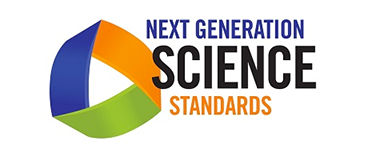We’ve Only Just Begun
By Kathy DiRanna
CA NGSS adopted! California Science Framework written! Instructional materials State approved! California Science Test (CAST) Assessment results are on their way! We are done!
Wouldn’t it be wonderful if that combination of reality and pixie dust meant every student in California had a quality science education? Unfortunately, nothing can be further from the truth!
In 2018, The Center for the Future of Teaching and Learning at WestEd published The Center’s CA Insights-2017-2018: Spotlight on the Next Generation Science Standards (NGSS). This study looked at three key drivers of implementation of standards: professional learning, funding, and instructional shifts. Their findings include:
Finding #1: Districts report a disconnect between the timeline for NGSS and the capacity to implement. They’re constrained by a complexity of factors including inadequate instructional resources, and lack of bandwidth in the midst of ongoing math and ELA challenges.
- 29% of the district leaders indicated that further implementations-such as NGSS-were put on hold in order to focus on math and ELA.
Finding #2: Half of all district leaders we spoke with have not begun allocating funds toward NGSS implementation. An additional quarter of district leaders report still being in the planning stages for funding NGSS implementation.
- District’s funding strategies reflect their varied stages of implementation, with 22% adopting a “wait and see” approach, 25% in the planning stage and 30% forgoing implementation until funding is available.
Finding #3: District leader perceptions suggest that teachers may not yet have had time to benefit from the training and practice needed to master the instructional shifts demanded by the Next Generation Science Standards.
- 79% of the district leaders cited teacher leaders as the key implementers of professional learning in ELA and math; science teachers, on the other hand, have not yet been able to benefit from the same professional learning opportunities.
In March 2018, Gao, et.al, reported in Implementing the Next Generation Science Standards: Early Evidence from California, similar findings to those above. In addition, they noted a positive note that “an overwhelming majority of respondents are either very familiar (60%) or somewhat familiar (31%) with the CA NGSS.” While awareness is necessary to implementation it is not sufficient for changing teaching practices. Studies on the implementation of the previous standards have found that teachers who said they were implementing the new standards were no more likely to be using standards-based practices than teachers who were not implementing the standards (Banilower, Smith, and Weiss 2002).
But all is not doom and gloom--in districts where there is committed leadership for district-wide NGSS implementation, we are finding success. These districts include those who have self-funded their efforts using their LCAP; districts who have sought partnerships through their county offices, California Science Project (CSP), or the K-12 Alliance; and those who have had grants, like CA NGSS K-8 Early Implementation Initiative. These districts show that the needle of implementation is moving and that more students are beginning to explore the wonder that is science.
These districts have addressed several dimensions needed for implementation:
- Analyze and change district policies and practices—what has been board approved to support science? Who is pulled out of science for other subjects?
- Build administrator leadership—who and at what level (district vs site) have been engaged in professional learning about NGSS? Who understands that using science as a context can unite many other subjects including ELA and math?
- Build teacher leadership—how many and at what levels (elementary, middle and high school) have had opportunities to engage in their own learning about NGSS as well as learning how to lead/mentor/support others?
- Change teacher practice—how many and at what levels (elementary, middle and high school) have had in-depth professional learning (e.g., lesson studies) that are transformational to their practice? That address the quality use of phenomena/problems and 3-dimensional understanding of those phenomena/problems?
- Provide students with opportunities to learn NGSS science—which students are in which classes? How is literacy integrated with science? How are the tenets of How People Learn (NRC, 2000) incorporated into daily instruction?
- Create a Community of Practice—how do educators share their learning? Their successes? Their challenges? How does the community get smarter and set new visions for science education in their context?
More on the successes of these districts can be found in the CA NGSS K-8 Early Implementation Initiative evaluation reports found on the K-12 Alliance website’s NGSS page.
While the state’s official role in adopting the CA NGSS, publishing the Framework, adopting materials and providing the CAST might be finished, others in the state are strategizing ways to continue to move the needle. The NGSS Collaborative, (a collaboration between the California Science Teachers Association (CSTA,) California Science Project, K-12 Alliance @WestEd, County Offices of Education and the California Department of Education) and the Science Community of Practice are investigating ways to sustain the positive movement for CA NGSS implementation. Stay tuned for the State budget for the next year!
While we’ve only just begun, the journey is possible and can be productive—so wherever you and your district are, all of California’s children are waiting for you to take action. Just do it already!
References:
The Center for the Future of Teaching and Learning at WestEd The Center’s CA Insights-2017-2018: Spotlight on the Next Generation Science Standards (NGSS). Retrieved from: https://thecenter.wested.org/insights/2017-18-ca-standards-implementation/spotlight-on-the-next-generation-science-standards-ngss/
National Research Council (NRC) (2000). How People Learn: Brain, Mind, Experience, and School: Expanded Edition. Washington, DC: The National Academies Press. Retrieved from: https://doi.org/10.17226/9853
Niu Gao, Sara Adan, Lunna Lopes, and Grace Lee (20018) Implementing the Next Generation Science Standards: Early Evidence from California, Public Policy Institute of California. Retrieved from: https://www.ppic.org/publication/implementing-the-next-generation-science-standards-early-evidence-from-california/
Kathy DiRanna is the Statewide Director for the K-12 Alliance @WestEd and the CA NGSS K-8 Early Implementation Initiative and a lifetime member of CSTA. Her email is kdirann@wested.org







